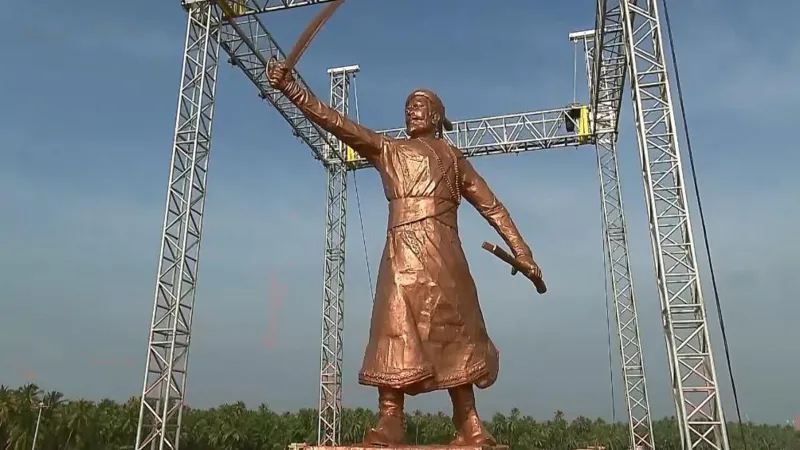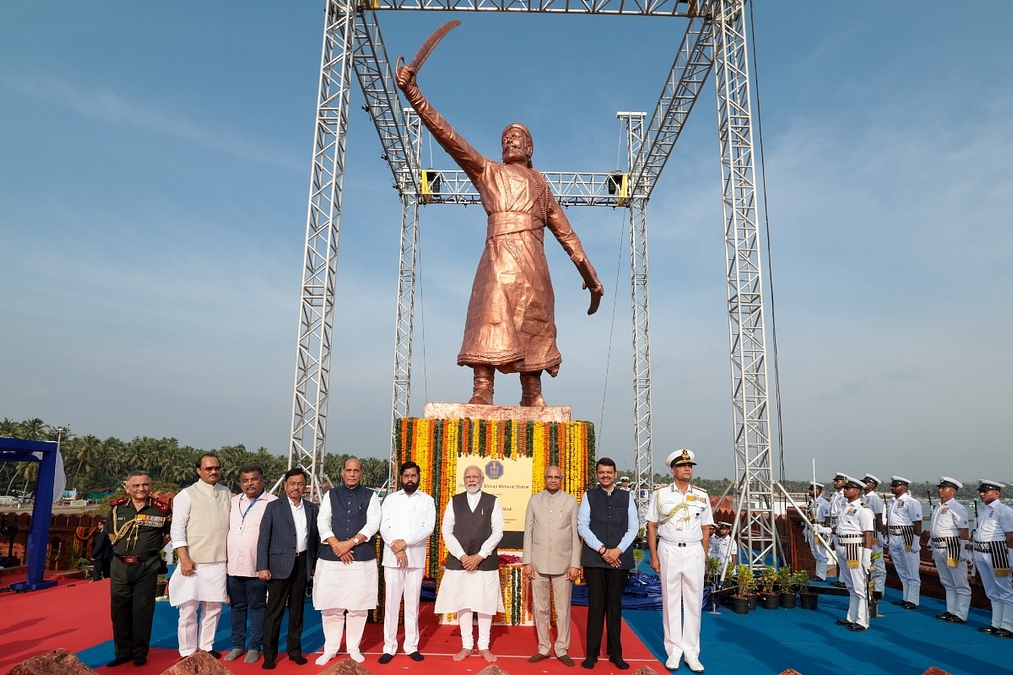In Maharashtra, the dramatic collapse of a giant statue of 17th-century Maratha king Chhatrapati Shivaji Maharaj has kicked up a political storm. The statue, a symbol of regional pride and political significance, fell amid heavy monsoon rains on August 26, just weeks before crucial state elections. The incident has triggered intense protests and allegations of corruption, rocking the political landscape in the western Indian state.
The collapse and immediate aftermath
The 35-feet tall statue, located in Sindhudurg district, was inaugurated by Prime Minister Narendra Modi in December. Built at a cost of Rs 23.6 million ($281,285; £214,185), it was built to pay tribute to the famous warrior king Shivaji, known for his resistance against the Mughal Empire. However, the fall of the statue has become a flashpoint in Maharashtra’s political arena.

The state’s ruling coalition, comprising the Bharatiya Janata Party (BJP) and breakaway factions of the Shiv Sena and the Nationalist Congress Party (NCP), has come under intense scrutiny. The incident has provided a potent issue for the opposition, which has leveraged it to demand accountability and resignation from Chief Minister Eknath Shinde. Senior opposition leader Sharad Pawar has accused the state government of corruption, alleging that the statue’s collapse was a result of shoddy workmanship rather than natural causes.
Political fallout and public sentiment
With elections looming, the timing of the statue’s collapse could not have been worse for the ruling coalition. Opposition parties, especially the Maha Vikas Aghadi (MVA) alliance, have seized the opportunity to challenge the BJP-led government. Pawar’s claim that the statue’s collapse was due to corruption and mismanagement reflects public frustration over alleged government inefficiencies and malpractices.

Chief Minister Shinde has denied these claims, attributing the statue’s collapse to strong winds accompanied by monsoon rains. He has said that the Indian Navy, which oversees the statue’s construction, has been informed of rusting of the structural supports. BJP state chief Ashish Shelar has publicly apologised and vowed to address the situation, promising that those responsible will be held accountable.
Role of Shivaji Maharaj in state politics
Shivaji Maharaj occupies a unique place in Maharashtra’s political and cultural landscape. Having been crowned as Chhatrapati in 1674, he is celebrated not only as a warrior king but also as a symbol of Maratha pride and identity. In contemporary Maharashtra, political parties are acutely aware of his significance and the potential repercussions of any perceived disrespect towards his legacy.
The political discourse around Shivaji Maharaj is deeply intertwined with regional and caste-based sentiments. The Maratha community, which has historically dominated Maharashtra’s politics, has been particularly vocal about its demands for quotas in government jobs and educational institutions. Thus, the collapse of Shivaji’s statue is being seen by the opposition as a direct insult to Maratha pride, which could significantly affect voter sentiments.

Government response and ongoing protests
In response to the outrage, the state government has taken steps to address the situation. Authorities have arrested the structural consultant involved in the project and are searching for the sculptor. Meanwhile, protests have erupted across the state, with the MVA organising demonstrations to press for accountability and Shinde’s resignation. The BJP has responded to these protests, accusing the opposition of using the statue’s collapse for political gain.
The BJP’s efforts to handle the fallout have included publicly apologising and promising action, but the situation is still volatile. The state’s political landscape remains tense as both parties mobilise their supporters in anticipation of the upcoming elections.
Wider implications
The statue collapse and the subsequent political controversy highlights broader issues within Maharashtra’s governance and electoral dynamics. It underscores the challenges the ruling coalition faces in managing public perception and addressing allegations of corruption. The incident also illustrates the powerful role of cultural symbols in shaping political discourse and influencing voter behaviour.
As Maharashtra prepares for its elections, the fallout from this episode is likely to remain a focal point in the campaign. The opposition’s strategy to leverage the statue collapse against the ruling coalition could shift the balance of power, depending on how effectively they are able to mobilise public sentiment and turn it into electoral advantage.
